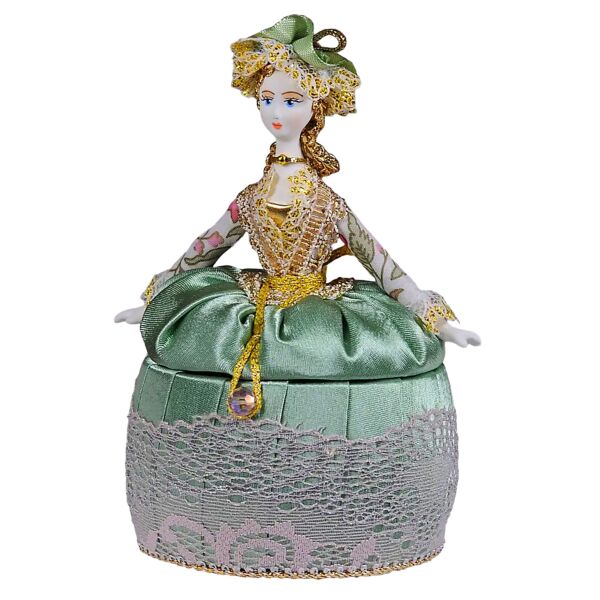Bestsellers
Russian lacquer painting
Lacquer painting later took shape in Europe as a kind of art. Each country developed its own individual style, which, for example, manifested itself in in their choice and interpretation and in the peculiarities of the decoration. Russian lacquer painting became a kind of of art peculiar to its national originality after mastering the achievements of foreign enterprises.
Components for lacquer painting are made of papier-mashe and its production technology has not changed for more than two centuries. The body, bottom and lid of the object are separately made. All these parts are then joined together primed, dried and processed. The next stage is the object's dyeing. It is usually painted from the outside by the black dye, and from the inside - the red dye. The object is then covered with transparent lacquer in several layers and then dried. The object is now ready to paint.
Russian lacquer boxes are beautiful miniature lacquer works created by the most talented Russian artists that have gained worldwide appreciation and are highly sought after. These small and distinctive treasures come from Fedoskino, Palekh, Kholui and Mstera, Russian villages. Miniature paintings on lacquered boxes usually feature themes of fairy tales, country life, troikas and landscapes. You can choose from a collector's item completely handmade and hand-painted, signed by an artist, or a lacquer box with a stunning print of a miniature masterpiece.
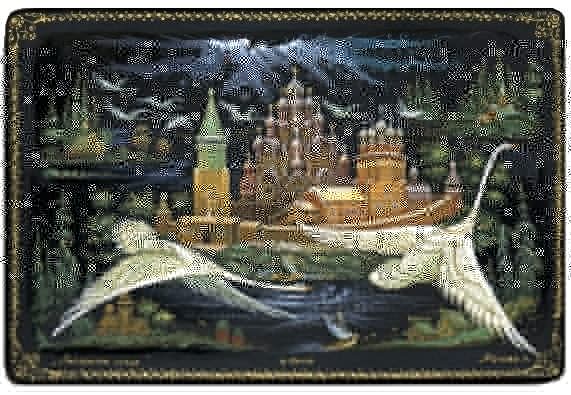
Lacquer boxes
A lacquer miniature is a type of traditional arts and crafts that is distinguished by the creation of a miniature painting on papier-mâché. The reason why painting is called lacquer is that varnishes are not only materials for creating the painting itself, but also the most important means of this artistic expressive work. Lacquer miniatures have a rich and glorious history, which expands from the ancient times till today. Lacquer miniature artists have no boundaries to creating the plots for the images. From the simple ornaments to the marvelous realistic depictions of plants, animals and human beings — the imagination of the art creators has always been endless.
The history of the masterpiece
The art of lacquer painting was born in the East in the ancient times. The ancient Chinese manuscripts are the first source that says the first lacquer painting was created 2,000 years ago. The Japanese varnish crafts were not rare, as well. The fabulous richness of decorative forms, the combination of the black background of the canvas and the multi-colored paints, and the great variety of oriental lacquers, represent the true artistic value.
In the Middle Ages, the art of painting the lacquer surface spread throughout the Indian and the Persian territories, and in the XVII century it penetrated Europe.
In 1763 factory was opened, which quickly gained recognition in Europe for the high quality of lacquer and pictorial images on miniature boxes and caskets.

The history of Russian lacquer miniatures started in 1795 when the merchant Ivan Korobov created the production of lacquer peaks for military caps of the Russian army in the village of Danilkovo. The production of trinket boxes and lacquer boxes arose after that. The first lacquer miniatures were unique, and, thus, very expensive, so they could only be afforded by members of the royal family and the nobility. The manufacturing of the small trinket boxes that are known to be a symbol of the lacquer miniature was first started 200 years ago. The mass production of lacquer products in Russia began in Moscow. Several Braunschweig masters from Germany were invited as teachers and leading artisans and, under their strict guidance; the production of lacquer ware had started.
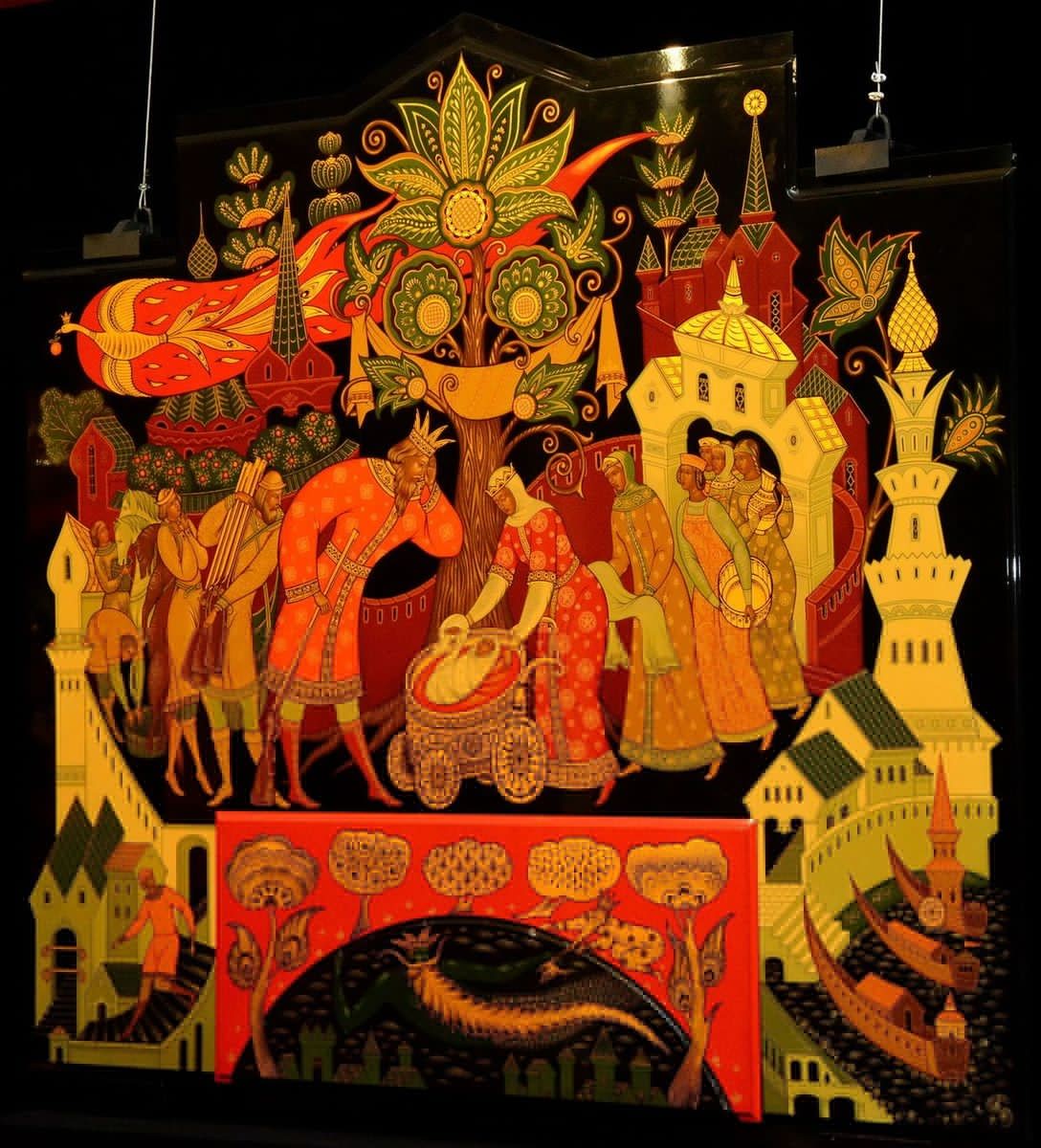
The base of the beauty
The manufacturing technology of lacquer miniatures is a very labor-consuming process, requiring special skills and high professionalism of the artisans. A lacquer miniature is performed on products made the using papier-mâché technique. Creating a papier-mâché base takes about 6 weeks. Papier-mâché is a mixture of cardboard and glue, severely pressed together. The elements for crafting the final product are supposed to be very light, strong, and resistant to cracks and other breakage processes. It is not surprising that the whole manufacturing process of a single box takes one year.
The manufacturing process of a lacquer box construction should be strictly followed step-by-step. First of all, its bases are made of wooden board, applying flour paste on each layer (there can be up to layers). After that, during the same day, the resulted items should undergo natural drying, and then they are soaked in vats with heated vegetable oil, and dried again. As a result, the product acquires strength and is as durable as high-quality wood.
After that, a dried base is glued to the bottom, the lid is attached and the item is adjusted to the desired shape of the box, resulting in a semi-finished product. The form is then subjected to grinding and coated with black lacquer on the outside and with red paint inside. It is important to apply several layers of colorless varnish to each surface of the item. After an artisan draws the painting, it also has to be fixed with several layers of colorless varnish. At the end of the process, the entire surface of the product has is polished to a smooth surface.
Painting is the art
The main decoration of papier-mâché is lacquer painting. The history of lacquer painting is rooted in Russian icon painting, so the first products in the papier-mâché technique resembled icon writing in their ornamentation. Such products are boxes, snuff boxes and decorative boxes.
The process of creating the Fedoskino miniature painting are complicated and should be followed step-by-step. First, the desired picture is applied with oil paints in 3-4 layers, and the strict sequence is maintained. In the beginning, a general sketch of the composition was created, and then the artisan fills in the details. After that the image is drawn with transparent paints, and, finally, the whole work is polished and gently cleaned.
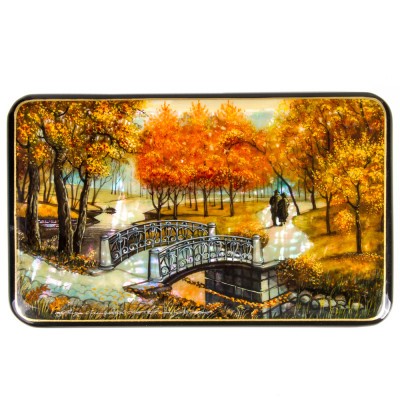
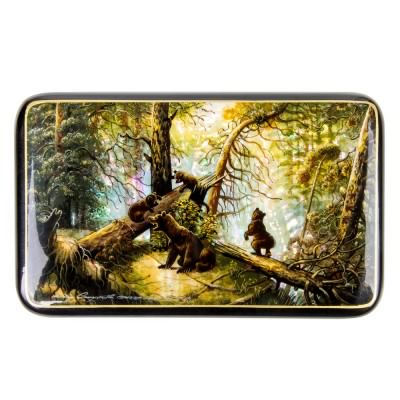
The original Fedoskino technique is unique in that a special metal powder, a light-reflecting material, is applied to the surface before painting; the mother of pearl incrustation is also used often. These unusual materials are seen through the layers of transparent paints and provide the depth and the glow-from-the-inside effects to the picture.
Fedoskino art studio produces a large number of items, applying this technology. Their most famous items are: famous: caskets, trinket boxes, teapots, eyeglasses, purses and Easter eggs, etc. The main themes of the Fedoskino painting are the images of the Russian nature, scenes from Russian folk songs and fairy tales, motifs from the Russian history.
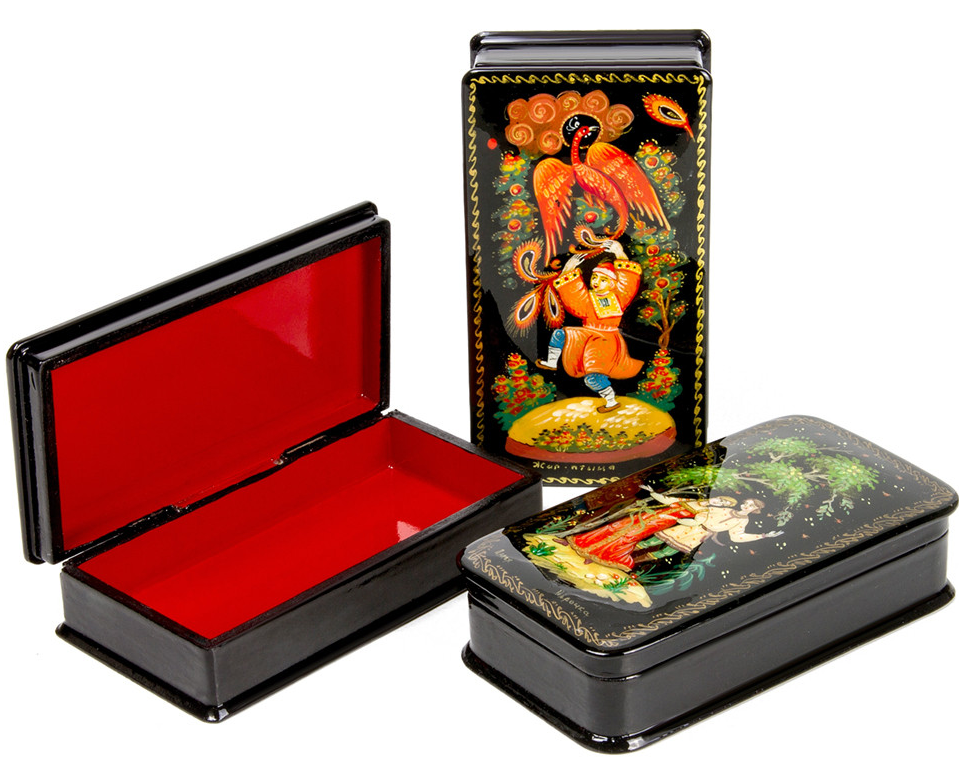
The Great Competitors
The Palekh lacquer miniature, which, another unique, internationally famous lacquer miniature production, follows the traditional Russian icon painting technique. The pictures from the lives of the Saints or the easily recognized religious and sacred motifs, often inspired the artists of the Palekh tradition. Palekh miniature has finely drawn ornaments that delicately emphasize the edge of a case or the lid of a box.
The craftsman of the Mstera miniature art studios also created a type of folk miniature painting based on iconographic craft. However, it deviates from the iconic traditions towards a realistic interpretation of space and an image of a person, giving the most accents to the detailed depiction of the image, not the plot itself. The artists of Mstera painting studios depict their miniatures on the background covered with white, which is one more distinguishable part of their drawing style.
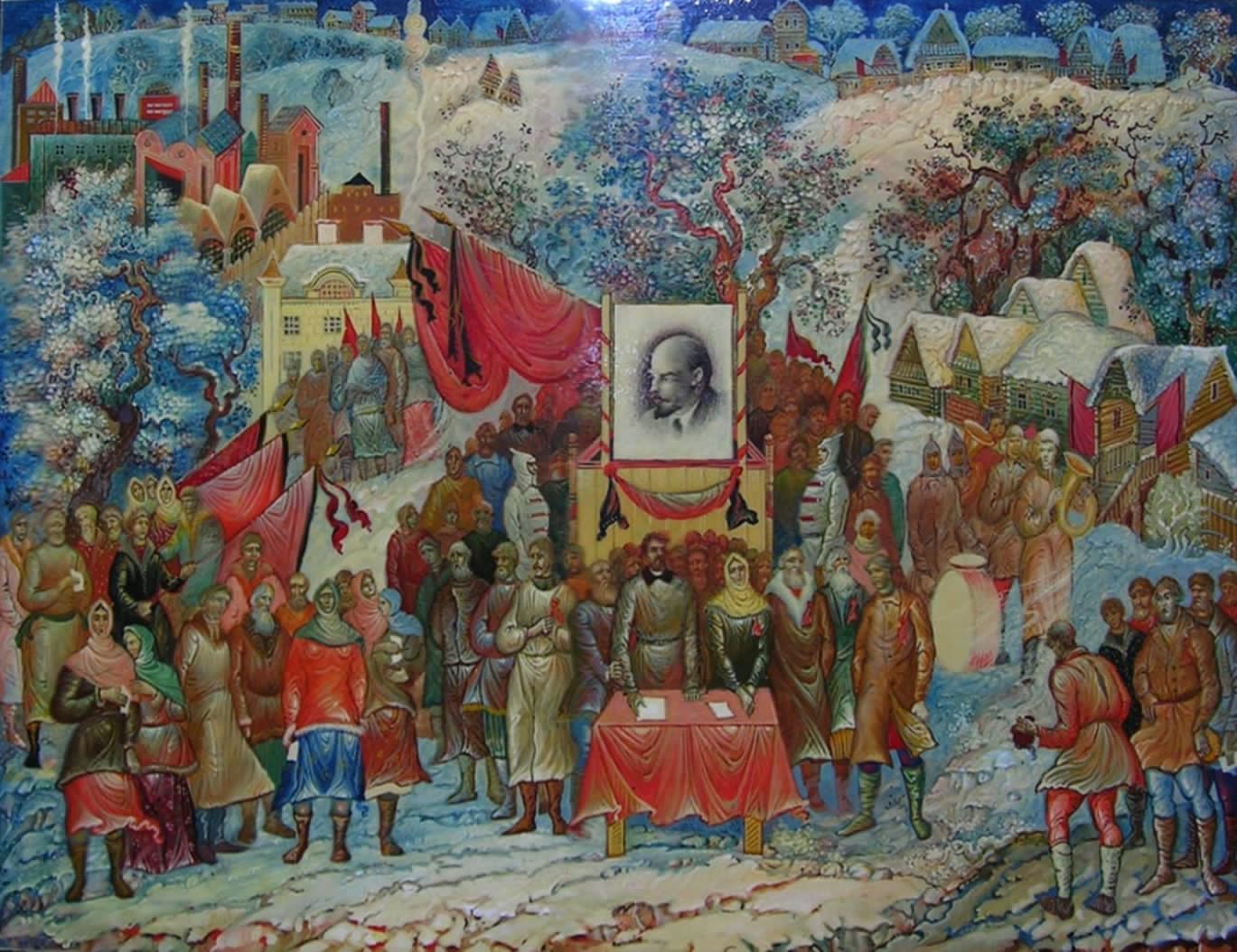
Finally, the Kholuy miniature is close to Palekh of its image techniques. The craft originated in 1932 in the village of Kholuy (which is located in the Ivanovo region) and actively used the traditions of icon painting. The Kholuy lacquer miniature is characterized by its closeness to nature and pastoral painting. Often, the scenes depict people`s everyday lives.
The total compositions of the Kholuy painting are never overloaded with details, as the artists prefer more minimalistic and laconic images. The proportions of human figures depicted are close to reality and the colors were always deep and rich. The plots often reference Russian fairy tales and legends.
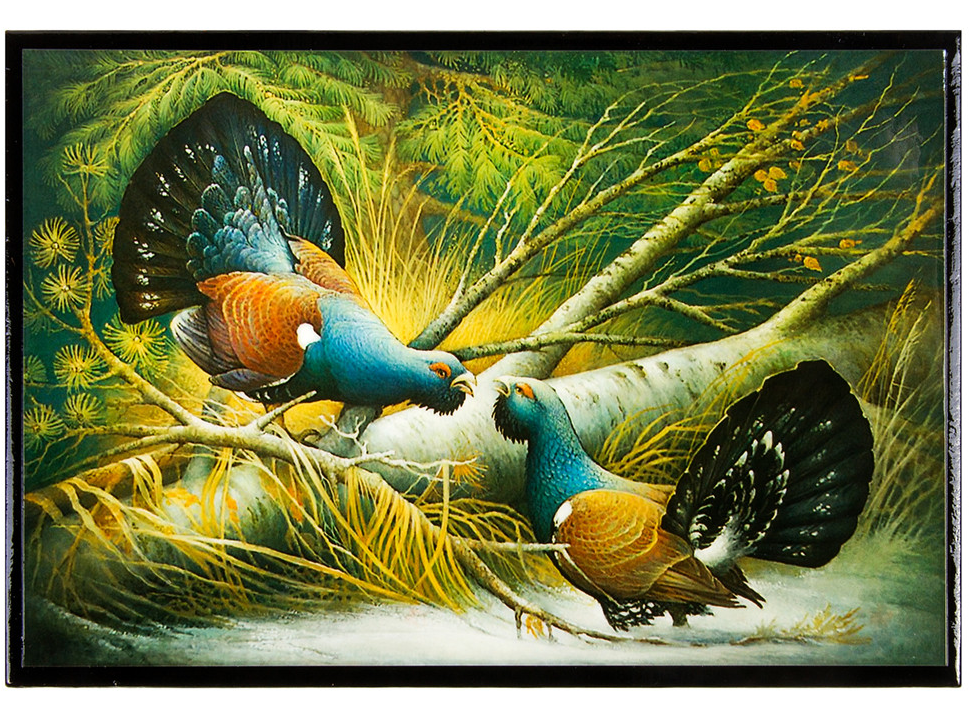
In St.-Petersburg Global Trade House you will find a great variety of lacquer miniature items, representing the genius of the best artists of different art studios traditions.






